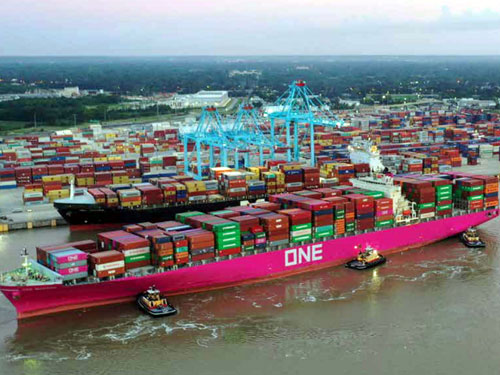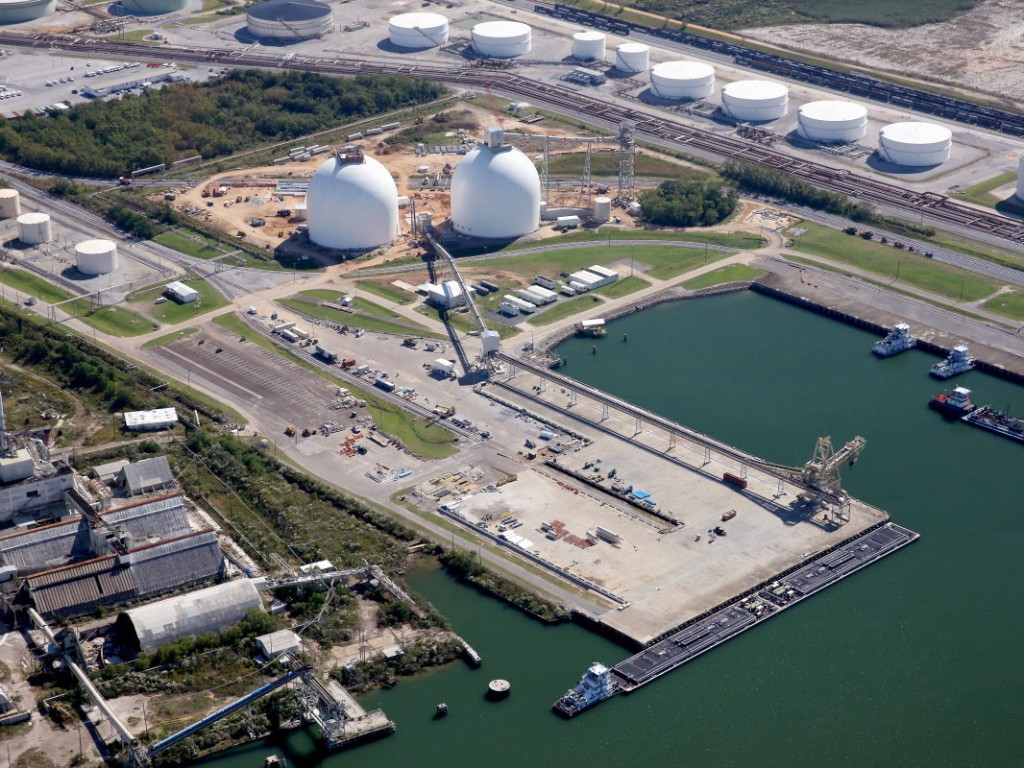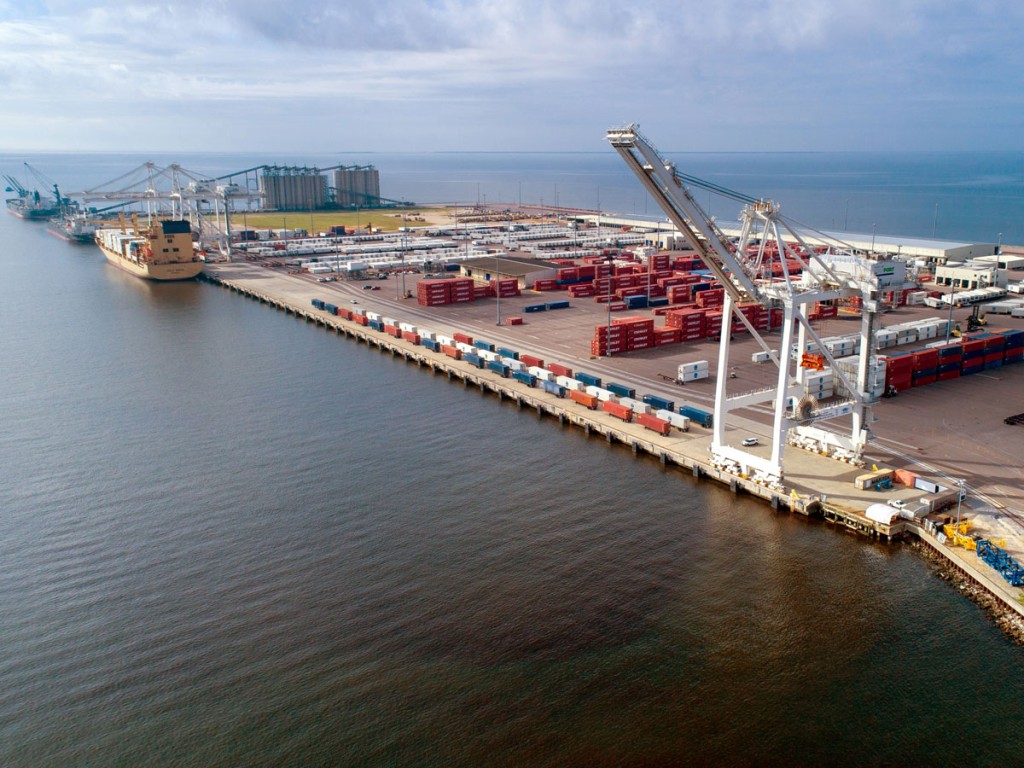Deepwater ports of Alabama and Mississippi are busy beefing up rail and roadway connections as they look to improve the flow of burgeoning cargo volumes on and off their terminals.
And better intermodal links are just part of the story at mid-Gulf ports, where improved water access for larger vessels is also in the cards.

Alabama State Port Authority
With the Alabama State Port Authority’s Port of Mobile handling rapidly growing cargo volumes and increasing intermodal rail transfers, efforts are moving forward to enhance freight movement through port terminals and beyond.
The port authority plans to use $38 million in federal grant funding announced in March toward building an interterminal connector bridge linking expanding Mobile Harbor marine terminal facilities with an intermodal container transfer facility, or ICTF, and adjacent logistics park, as well as toward site development in preparation for construction of distribution centers. Mobile Harbor should become more accessible to larger vessels by late 2024 or early 2025, when a $367 million channel project is anticipated to deliver a 50-foot draft.
Meanwhile, with a $52 million investment by the port authority and CSX Transportation, a new ICTF is being developed nearly 200 miles northeast of Mobile, in Montgomery, Alabama’s capital city, to be served via regular CSX rail service. Also, under a $231.6 million rail corridor initiative, Norfolk Southern is beefing up connections between Mobile and several inland sites, including the Class I’s McCalla Intermodal Facility near Birmingham.

Port of Pascagoula
Along the Mississippi Gulf Coast, just west of the Alabama state line, the Jackson County Port Authority’s Port of Pascagoula looks this month to welcome the first vessel call at the $90 million wood pellet export terminal recently completed by Enviva Holdings LP in Bayou Casotte Harbor. A pair of 170-foot tall, off-dock storage domes – each able to accommodate 45,000 metric tons of pellets – plus a conveyor system with ship loader have been finished at the export terminal, which is to receive wood pellets via truck, rail and/or barge from four Enviva plants, including one about 40 miles to the north in Lucedale.
In another major infrastructure development, the Port of Pascagoula has secured all requisite approvals to proceed with its $15 million, 0.8-mile North Rail Connector project to establish full operational connectivity between the Mississippi Export Railroad short line and interchange yard and CSX and Canadian National mainline tracks. The rail project is anticipated to take about 18 months to complete.
Longer-range plans call for infrastructure enhancements at the port’s South Terminal, formerly known as the Pascagoula River Harbor.

Mississippi State Port Authority
About 45 miles west of Pascagoula, the Mississippi State Port Authority’s Port of Gulfport is following up expansion of its West Pier Terminal with a roadway project aimed at enhancing intermodal connections and access. A $15.7 million federal port infrastructure grant is being directed to modernize the roadway corridor between the port entrance and 25th Street, improving safety and removing port-related trucks and their idling emissions from the downtown area.
In recent years, the MSPA has inked new leases with such firms as underwater exploration leader Ocean Aero Inc. while expanding presences of existing tenants, including green fruit importers Dole and Chiquita, calcined coke producer Chemours, ocean carrier Crowley and Island View Casino Resort. The port also has become home to marine research facilities of the University of Southern Mississippi, with construction now proceeding on the Roger F. Wicker Center for Ocean Enterprise, to focus on development of uncrewed maritime systems.
The Port of Gulfport is pursuing approval to deepen to as many as 47 feet its navigational channel, which is currently dredged to its full operational depth of 36 feet.




